If I told you that one pill could help both certain cancers and a life-altering blood disorder, you’d probably think I was being dramatic. But that’s Hydrea for you. This little capsule sits quietly in pharmacy shelves but has a massive impact for people dealing with things like chronic myeloid leukemia, ovarian cancer, and sickle cell anemia. Ask anyone who’s leaned on it—they know it’s not just another random prescription. There’s history, science, and seriously important details most people never hear unless they’re in the weeds with this stuff. Before you brush it off as just another med, buckle up. Things are about to get real interesting.
What is Hydrea and Why Do Doctors Use It?
Hydrea is the trade name for hydroxyurea, a medicine doctors have used since the 1960s for some types of cancer and blood disorders. Most people have never heard of hydroxyurea unless it’s sitting on their nightstand. But in the world of hematology and oncology, it’s a pretty big deal. Hydroxyurea isn’t your run-of-the-mill pain reliever or anti-inflammatory—this drug gets involved when the body’s making too many crazy cells. Doctors use Hydrea mostly for chronic myeloid leukemia (CML), head and neck cancers, ovarian cancer, and a weird club of blood conditions with extra-thick blood, like polycythemia vera.
The magic of Hydrea is all about its ability to mess with DNA synthesis. Basically, it puts the brakes on certain rapidly growing cells, especially the troublemakers. In cancer, that means stopping tumor growth or at least slowing it down. When it comes to sickle cell anemia, things are a bit different: Hydrea boosts something called fetal hemoglobin, which makes red cells more flexible, lowering the risk of pain crises—those infamous sickle cell attacks. This shift is life-changing for some folks. In sickle cell clinics, Hydrea earns the nickname "game changer" all the time. Research from the New England Journal of Medicine back in 1995 found Hydrea slashed the number of painful crises in adults with sickle cell by close to 50%. That’s not a small win—that’s major.
Taking Hydrea isn’t a one-size-fits-all game. Doses vary, depending on whether it’s cancer, a blood disease, or something in between. Physicians make a big deal out of starting low and going slow. Monitoring is constant—nurses and doctors check blood counts every one to two weeks when therapy kicks off. Sounds annoying? Maybe, but these checks help catch any bone marrow suppression early. Because if that happens fast, things can spiral.
Ever wonder how many people are on this stuff? According to recent data, an estimated 70,000 sickle cell patients across the United States could be eligible for Hydrea treatment, though not everyone actually receives it. And cancer? Still a frontline, especially in resource-limited countries where newer drugs simply aren’t affordable. If you know someone taking Hydrea, they’re not alone—and odds are they’re part of a pretty large club.
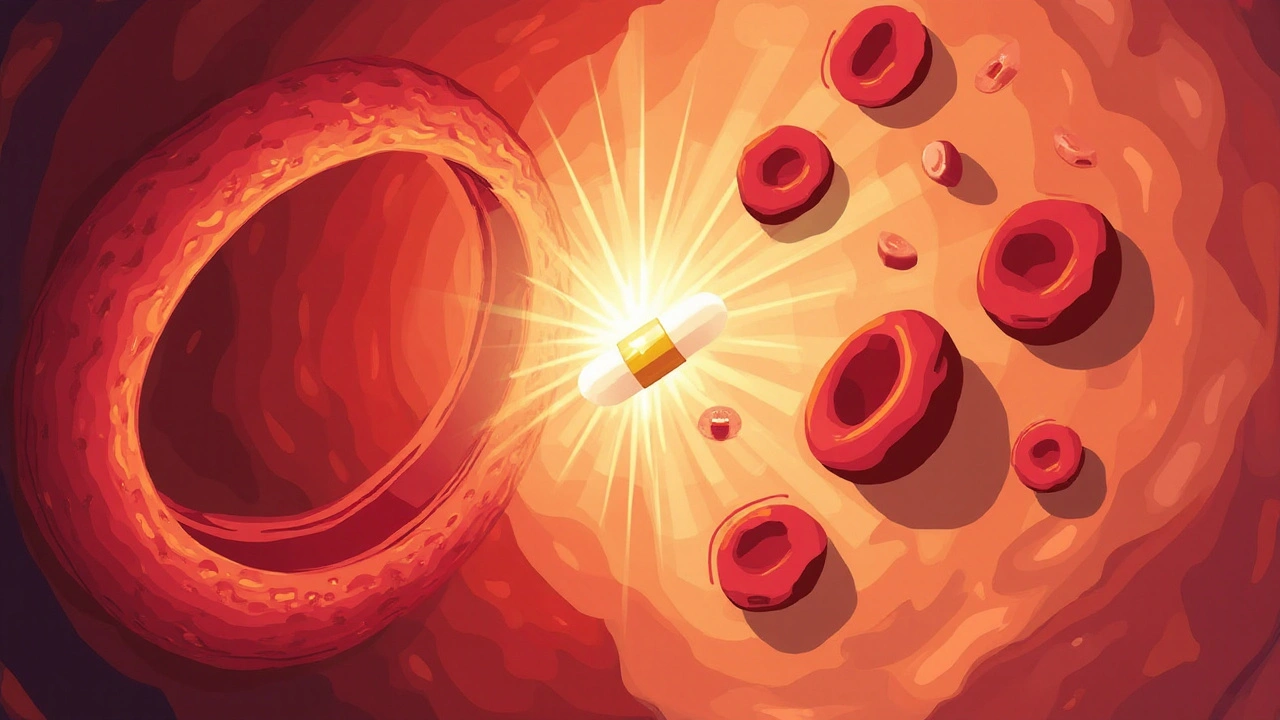
What Does Hydrea Actually Do to Your Body?
Let’s skip the vague science for a second and get into the nitty-gritty of what happens when you swallow that capsule. After slipping into the bloodstream, Hydrea heads straight for the bone marrow—the factory pumping out new blood cells. It slows down DNA production, meaning cells that want to grow like weeds (cancer, overactive white cells, or those nasty sickle-shaped ones) suddenly can’t multiply as fast.
The big draw in sickle cell disease is Hydrea’s ability to crank up fetal hemoglobin. Why does that matter? Because fetal hemoglobin doesn’t sickle. The more you have, the less likely those red cells will clump up and clog your vessels—a giant relief for anyone who’s ever dealt with the mind-bending pain of a sickle crisis. Doctors often say the change can feel like night and day for people who’ve lived on monthly ER visits and blood transfusions. Some patients even go months without a single crisis—stuff that once sounded impossible.
But what about cancer? In chronic myeloid leukemia, ovarian cancer, and others, Hydrea is about slowing the onslaught of rogue cells. It gives the body’s normal cells a fighting chance, buying time for other treatments or reducing the need for more toxic therapies early on. Hydrea isn’t usually the main star for every cancer—it tends to work best alongside other meds, especially now that targeted therapies are on the scene. Still, in places without access to the latest and greatest, Hydrea is a lifeline.
Doctors can measure the drug itself in blood, but most are watching the effects—how the patient’s blood counts look week by week. That’s because Hydrea, for all its perks, can suppress normal cells along with the overactive bad guys. Blood counts drop (white cells, platelets), which can open the door to infections or make it harder to stop bleeding. That’s why lab checks are so non-negotiable. If white blood cell counts dip a little too low, the dose gets adjusted or held. Don't leave those lab slips ignored on the fridge.
A common question: How long does Hydrea stay in the system? Turns out, it exits pretty quick—most people clear it from their blood within 18 hours. But the impact on blood cells can last much longer. Skipping pills or doubling up because you missed a dose? Tempting on a bad day but plain risky. Dosage needs to stay steady for the best results, so calendar reminders really do matter.
Want to know what makes all this tick? Check out the table below for a few details on how Hydrea works and what changes to expect.
| Effect or Lab Value | Expected Change | Time Frame |
|---|---|---|
| White Blood Cells | Decrease | Within 1-2 weeks |
| Fetal Hemoglobin (in sickle cell patients) | Increase | 1-3 months |
| Platelet Count | Decrease | Within 2 weeks |
| Pain Crises (sickle cell) | Decrease in frequency | Within 2-3 months |
Have a friend or family member worried about what Hydrea is doing inside them? Pointing at those numbers can help things feel less mysterious and more manageable.

Side Effects, Safety Tips, and What People Wish They Knew Before Starting Hydrea
Hydrea isn’t exactly a walk in the park when it comes to side effects, but most people decide the benefits outweigh the hassle. The most obvious stuff? Low blood counts. That means bruising from little bumps, nosebleeds that last longer than they should, or feeling wiped out from even basic activities. If your white cells droop too far, you’ll be prone to every sniffle and bug going around the office. Knowing these risks ahead of time helps, but nobody really knows what it feels like until they’re there.
Another thing: some people get skin changes, like darkening or sun sensitivity. One friend I talked to had what looked like freckles show up on her hands and face after a few months. She got worried, but her doctor told her it’s common and mostly cosmetic—not a reason to ditch the drug. Others can lose hair (rare), get mouth sores, or deal with stomach drama (hello nausea, vomiting, or diarrhea). Practical tip? Take Hydrea with food if your gut’s acting up.
If you’re hoping for kids anytime soon, it’s time for a frank talk with your doctor. Hydrea can harm unborn babies, so using solid birth control is a must during treatment. Both guys and girls need to have this chat—with their doctor, not just their spouse or partner. (And if you’re like me and Liana, careful birth control talk suddenly feels way, way more important.)
Handling Hydrea at home needs some thought, too. It’s considered a hazardous drug, meaning it can mess with DNA if handled carelessly. Always wash your hands after handling. If a capsule breaks open, don’t just sweep up the powder—use gloves and clean up with wet towels. Store it safely, especially far from curious kids or pets.
Some people ask, can you eat pretty much anything with Hydrea? For most, yes—there’s no strict food list to avoid. But drinking lots of water helps flush out byproducts, so keep that water bottle handy. Hydrea doesn’t get along well with some other drugs, like antiretrovirals or cancer meds, so give your pharmacist the full story on what you’re taking. And trust me, if you’re at all forgetful, pillboxes or smartphone alarms are your new best friends. You never want to double up because you forgot a dose—too much Hydrea hits your counts even harder.
People sometimes worry about “chemo brain”—that groggy, forgetful feeling with some cancer drugs. There are scattered reports with Hydrea, but it’s usually less dramatic than with full-on chemotherapies. Still, keeping an eye on mood, memory, and any weird symptoms is smart. If something feels off, jot notes between doctor visits. Most doctors appreciate details over vagueness (“I felt weird” gets you less help than “For three days, I couldn’t find my words at noon”).
How about long-term risks? Hydrea’s been around long enough that we know a bit: while it can rarely raise the chance of different cancers after years and years, most doctors call the benefits for severe sickle cell or cancer worth it. Those stats keep changing as more studies come in, but honest docs will chat about these small risks and help put them in perspective.
People new to Hydrea often swap hacks on forums or during long clinic visits. Here are a few practical tips I’ve picked up:
- Set multiple calendar reminders for clinic and lab visits—Google Calendar is your friend.
- Ask for a 90-day supply if insurance allows, so you’re not running to the pharmacy every month.
- Label your pill bottle or use a colored case, especially if other household members are on meds (one friend’s teenager nearly took her dad’s Hydrea, thinking it was allergy meds—yikes).
- Keep a symptom notebook—tracking minor side effects can show a pattern before lab results catch issues.
- If dealing with nausea, try ginger chews or tea before taking your pill, and eat small, bland meals.
Finally, nobody should be on Hydrea in a vacuum. If your doctor or nurse seems too busy, push for answers to your questions. Bring a partner or friend to appointments if you’re nervous about forgetfulness under pressure. Hydrea can make a huge difference, but you have to know how to play the game—staying alert for red flags, sticking with checkups, and reaching out if something feels wrong. That’s how you get the best of what modern medicine has to offer without stumbling on the hidden traps.

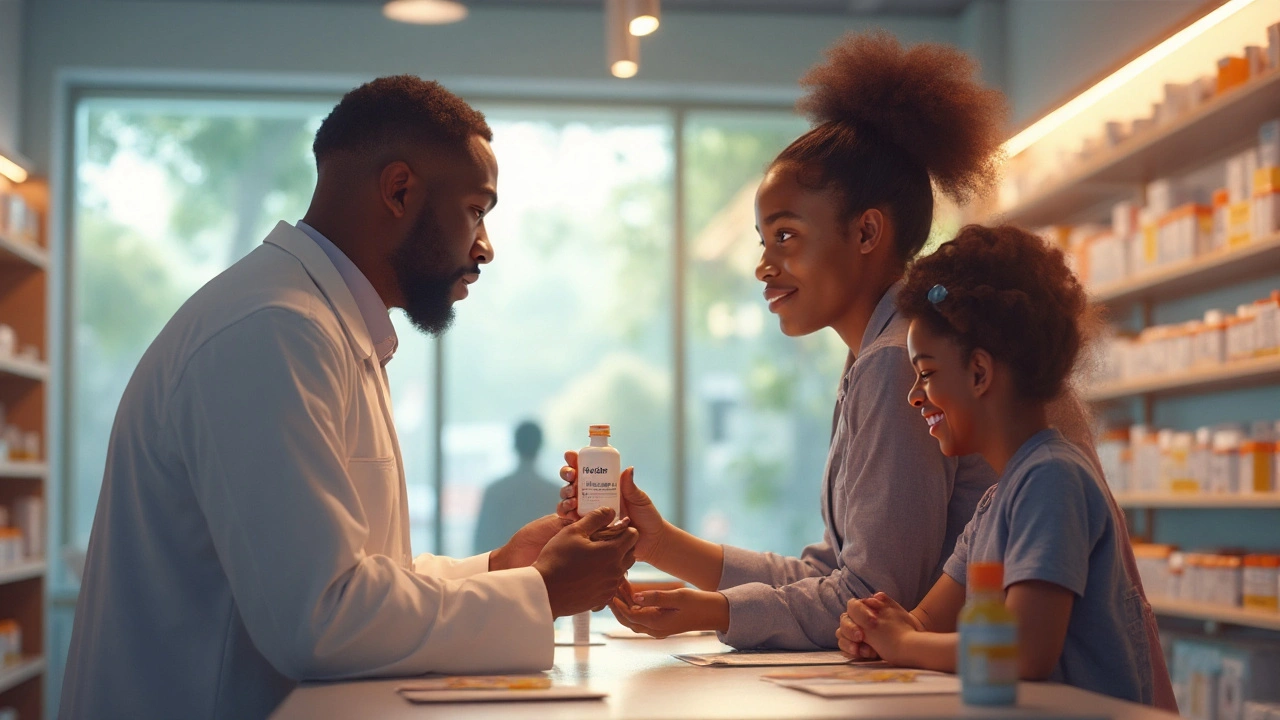
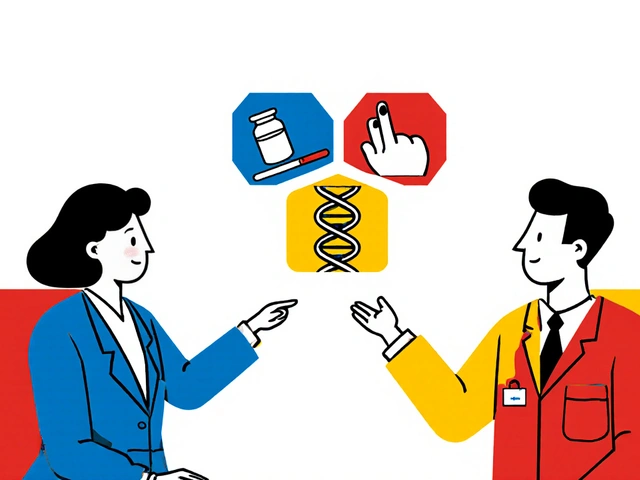
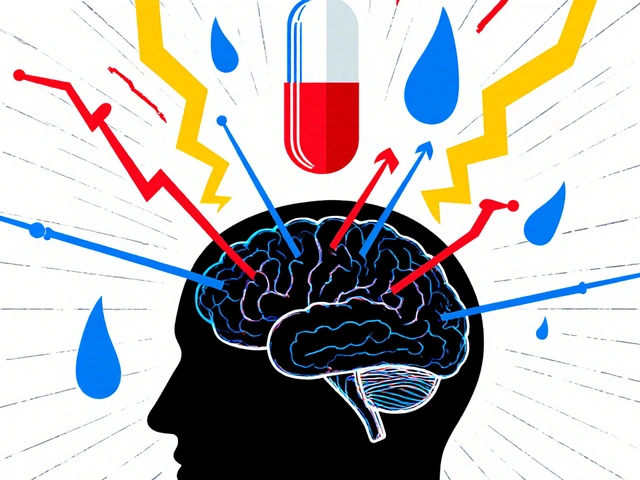

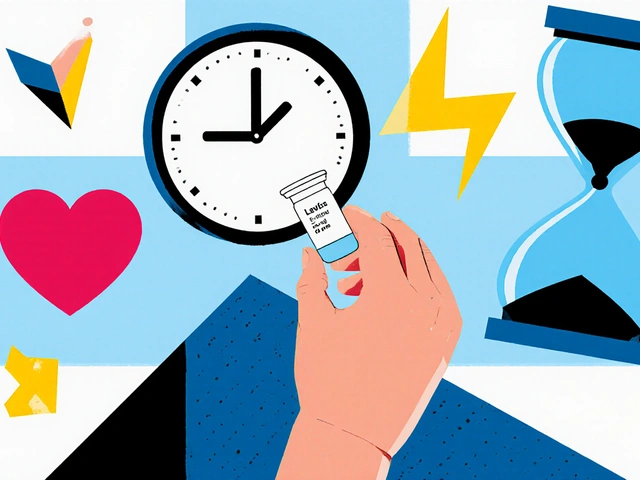

Anna-Lisa Hagley
August 13, 2025 AT 21:12Nice write-up — this really hits home for anyone who’s had to navigate the messy tradeoffs of chronic meds.
I especially liked the practical tips about pill organizers and lab reminders. Those little hacks actually change outcomes more than people realize. When you’re wobbling between “this helps” and “this feels awful,” having structure makes it easier to stick with a plan long enough to see benefits.
One thing I’d add: find a single trusted person in your medical team who can coordinate lab results and dosing adjustments. Too many hands on the wheel means mixed messages, and with Hydrea that can be dangerous. Clear communication saved my cousin from an unnecessary ER visit when a nurse flagged a low count before symptoms started.
Also: if you’re worried about fertility or pregnancy risks, ask for concrete timelines about stopping the drug and when it’s safe to try conceiving. Vague reassurances don’t cut it.
Overall: this post makes Hydrea feel less mysterious. Thanks for the concise, real-world focus.
A Walton Smith
August 16, 2025 AT 00:36Good summary. Simple and clear.
Patrick McVicker
August 18, 2025 AT 03:59Really useful thread, thanks for posting this :)
Quick note: I found that carrying a small folder with lab dates and recent counts made clinic check-ins so much faster. Saved me from repeating my history three times, lol.
Liliana Phera
August 20, 2025 AT 07:22Not gonna sugarcoat it: Hydrea works, but the monitoring is non-negotiable and the whole system sometimes treats patients like numbers not people.
If your clinic is slow to call you back about low counts, escalate. Call the nurse line, call the on-call doc, bring a note to the next appointment. Your blood counts aren’t optional data; they’re safety checks. Don’t let bureaucracy be the reason someone ends up in the hospital.
Also, fight for fertility counseling if it matters to you. Too many folks are told to “just stop later” without concrete plans. That’s reckless.
Dean Briggs
August 22, 2025 AT 10:46I want to expand on this from a slightly different angle because I think context matters more than most people realize, and Hydrea’s role isn't merely as a blunt instrument inflicted upon biological malfunction but rather as a kind of calibrated intervention that exists in a wider landscape of patient experience, public health systems, access disparities, and the evolving ethics of long-term therapy.
First, consider the historical aspect: hydroxyurea has been used for decades and its survival in clinical practice speaks to its pragmatic utility, especially in resource-limited settings where the newest targeted therapies are neither available nor affordable. That longevity does not mean perfection; it means clinicians and patients have learned to live with an imperfect but effective tool.
Second, there’s the biochemistry, which the original post summarized well. Increasing fetal hemoglobin in sickle cell disease is not merely a laboratory curiosity — it fundamentally alters the mechanical behavior of red blood cells and reduces the microvascular occlusion that causes pain and organ damage. That ripple effect is why some patients report life-changing improvements after starting the drug.
Third, one must weigh the psychosocial burden of regular monitoring against the clinical benefits. Frequent lab draws, clinic visits, and dose adjustments demand time, emotional energy, and often paid time off work. For many, this hidden cost is as consequential as the potential side effects; it affects employment, relationships, and mental health.
Fourth, the risk calculus changes with age, comorbidities, and life goals. A young person planning a family, for example, must factor in fertility preservation and the possibility of pausing therapy. Older adults may tolerate slightly different risks if the drug improves their functional status and reduces hospitalizations.
Fifth, there's an important point about polypharmacy. People on Hydrea frequently have other conditions and meds; interactions can be underappreciated. Good pharmacy review and medication reconciliation are essential to avoid unintended toxicity.
Sixth, patient education and shared decision-making are crucial. Too often, clinicians speak in probabilities and statistics, which can feel cold to someone living the day-to-day of a chronic condition. Translating data into what a week, a month, or a year might look like is an underused skill.
Seventh, practical harm reduction matters. If a patient is prone to missing doses, simple steps like blister packs, phone alarms, or linking medication to a daily habit (coffee, brushing teeth) can preserve efficacy and limit risky dosing errors.
Eighth, the long-term malignancy risk is nuanced. We should avoid alarmism but also not pretend there's zero risk; the right move is transparent discussion and individualized surveillance plans.
Ninth, global equity must be mentioned. For many patients worldwide, Hydrea is not a second choice but the only accessible disease-modifying option. We should advocate for more equitable access to the full spectrum of therapies while recognizing the life-saving role Hydrea already plays.
Finally, I’ll say this: the best outcomes come from a team approach — patient, family, clinicians, pharmacy, and nursing — all aligned toward concrete goals. When that happens, Hydrea can be transformative. When it doesn’t, the same drug can feel like an unnecessary burden. Context is everything.
Sadie Speid
August 24, 2025 AT 14:09Thanks for laying that out so clearly. Practical, compassionate, precise — love this.
Also, a tiny actionable thing: ask your clinic for a single phone number you can call for lab follow-ups. It sounds small but it cuts through the noise.
Sue Ross
August 26, 2025 AT 17:32Couple questions from the curious side: how often do people actually miss the early signs of marrow suppression between tests? Is there a specific symptom pattern most patients notice first?
Also, when someone switches from Hydrea to another therapy, do counts generally rebound quickly or is there a lag that people should plan around?
Rohinii Pradhan
August 28, 2025 AT 20:56This composition is thorough but perhaps a touch sentimental in places. Clinical pharmacology demands clarity and precision, not euphemism.
To be explicit: hydroxyurea’s mechanism of inhibiting ribonucleotide reductase and thereby impairing DNA synthesis is well established; the text should emphasize drug interactions and hepatic clearance parameters more prominently. Additionally, the post could better delineate absolute contraindications, such as severe renal impairment thresholds, and provide references or guidelines for lab thresholds that necessitate dose adjustments.
Patients deserve accurate, technical guidance alongside the anecdotal. A brief table of absolute neutrophil and platelet count cutoffs for holding therapy would have been helpful.
Theunis Oliphant
August 31, 2025 AT 00:19Exactly — clinical nuance is critical. But let’s not become so enamored with numbers that we forget the human story behind each chart line.
That said, yes, thresholds and protocols are non-negotiable. If you’re going to take a drug that affects marrow, you follow the rules or you accept the consequences.
Juan Sarmiento
September 2, 2025 AT 03:42Solid post and helpful community replies. A couple real-world tips from my coaching experience:
1) Build a single, portable summary sheet that lists current dose, last labs, emergency contact, and clinic phone. Keep it in your wallet or phone photos so any provider can pick up where you left off.
2) Use a medication app that allows you to log missed doses and symptoms; this is gold when you talk to clinicians — concrete logs beat vague memories.
3) If you get skin changes, sunscreen and a dermatologist consult are worth it; don’t just accept cosmetic stuff if it bothers you.
Small systems, big impact. Keep pushing for clarity from your team and use tech to reduce cognitive load.
Patrick McVicker
September 4, 2025 AT 07:06Great long post earlier — one more practical note: when counts drop and dose is held, labs often recover faster if you keep a close eye on hydration and nutrition. Not a miracle fix but it helps.
Liliana Phera
September 6, 2025 AT 10:29Yep, dehydration can make you look worse on labs overnight and it’s fixable, but don’t treat it like the only reason for bad counts — sometimes the med really is the cause and that’s okay. Hold and reassess.
Also, prophylactic measures for infection risk during low counts: mask in crowded places, avoid sick contacts when possible, and ask the clinic about early antibiotics if you develop fever. Don’t gamble with fevers — seek care.
Anna-Lisa Hagley
September 8, 2025 AT 13:52Answering the earlier question about rebound: counts usually start to recover within a week or two after holding the drug, but the timeline varies. Some folks see changes quickly, others more slowly — that’s why the weekly checks early on are so important.
As for early signs, many patients report unusual bruising, prolonged nosebleeds, or a sudden uptick in infections as the first warning. Fatigue is common but nonspecific, so pair it with other signs if you’re worried.
And yes, do push for clear lab cutoffs from your team — it removes ambiguity and makes decisions easier when you’re stressed.
Dean Briggs
September 10, 2025 AT 17:16Quick follow-up to that: when counts recover after holding Hydrea, clinicians often restart at a slightly lower dose and up-titrate cautiously. That conservative approach tends to minimize repeat suppression and keeps patients safer in the medium term.
Also, for anyone concerned about fertility, sperm or egg banking before starting therapy is reasonable to discuss. It’s a stress-inducing topic but worth addressing proactively.
One more thing — psychological burden: chronic meds that require monitoring can erode a person’s sense of normalcy. Incorporating mental health checks into routine care is not optional; it materially impacts adherence and outcomes.
Sadie Speid
September 12, 2025 AT 20:39Totally agree — if clinics offered quick mental health screening at lab visits, it would help so many people stick with treatment.
Also, remember to celebrate small wins. If someone goes months with fewer crises, that’s huge. Share the good days with your care team — it matters.